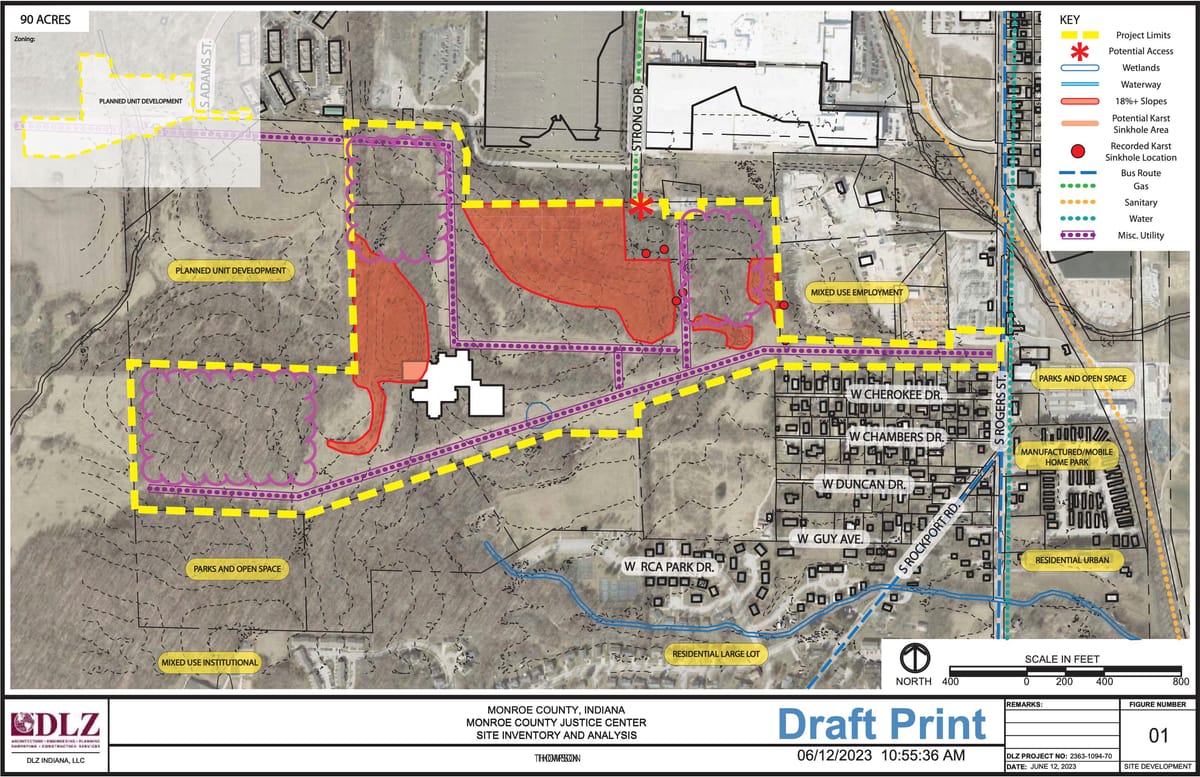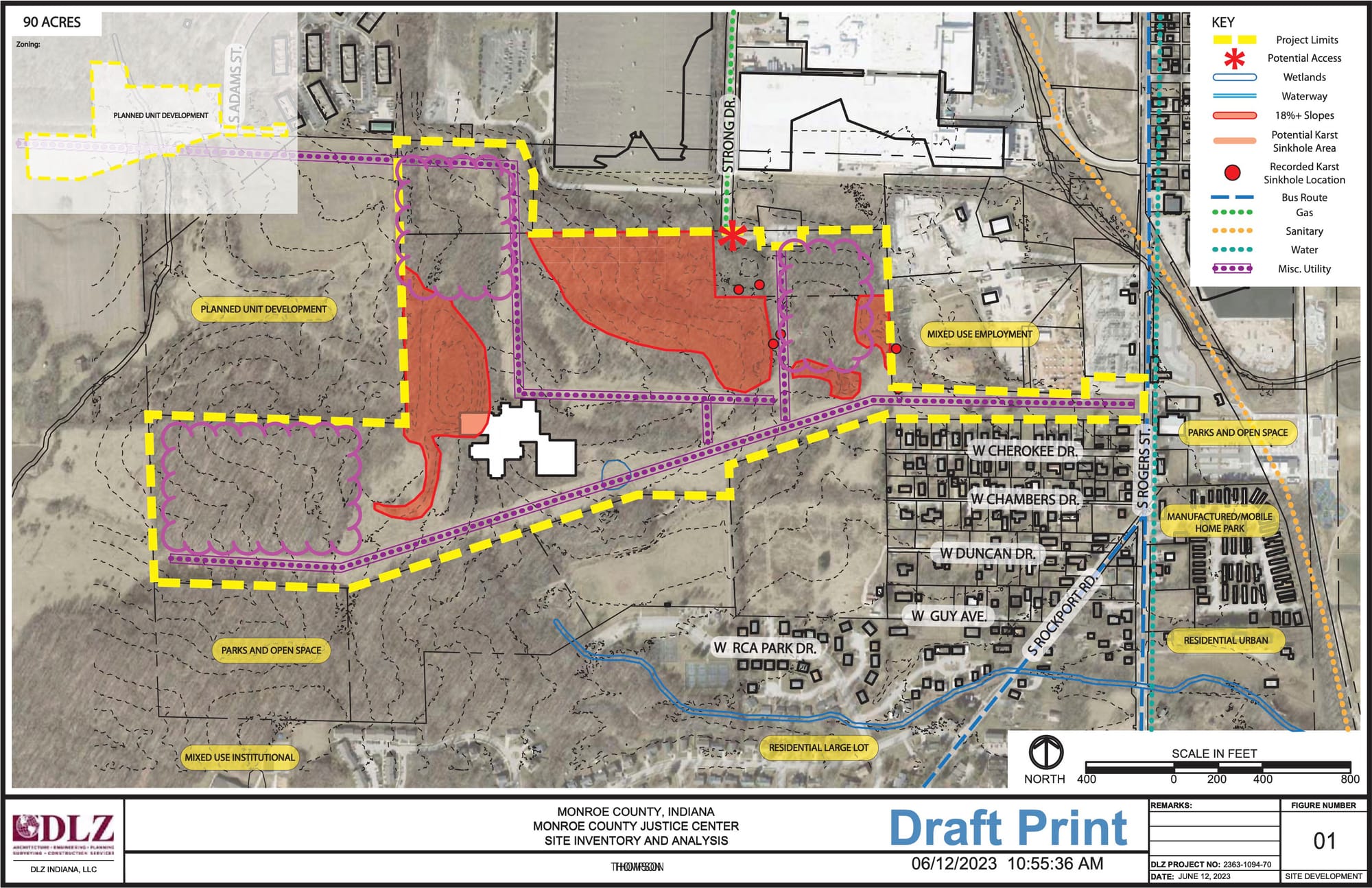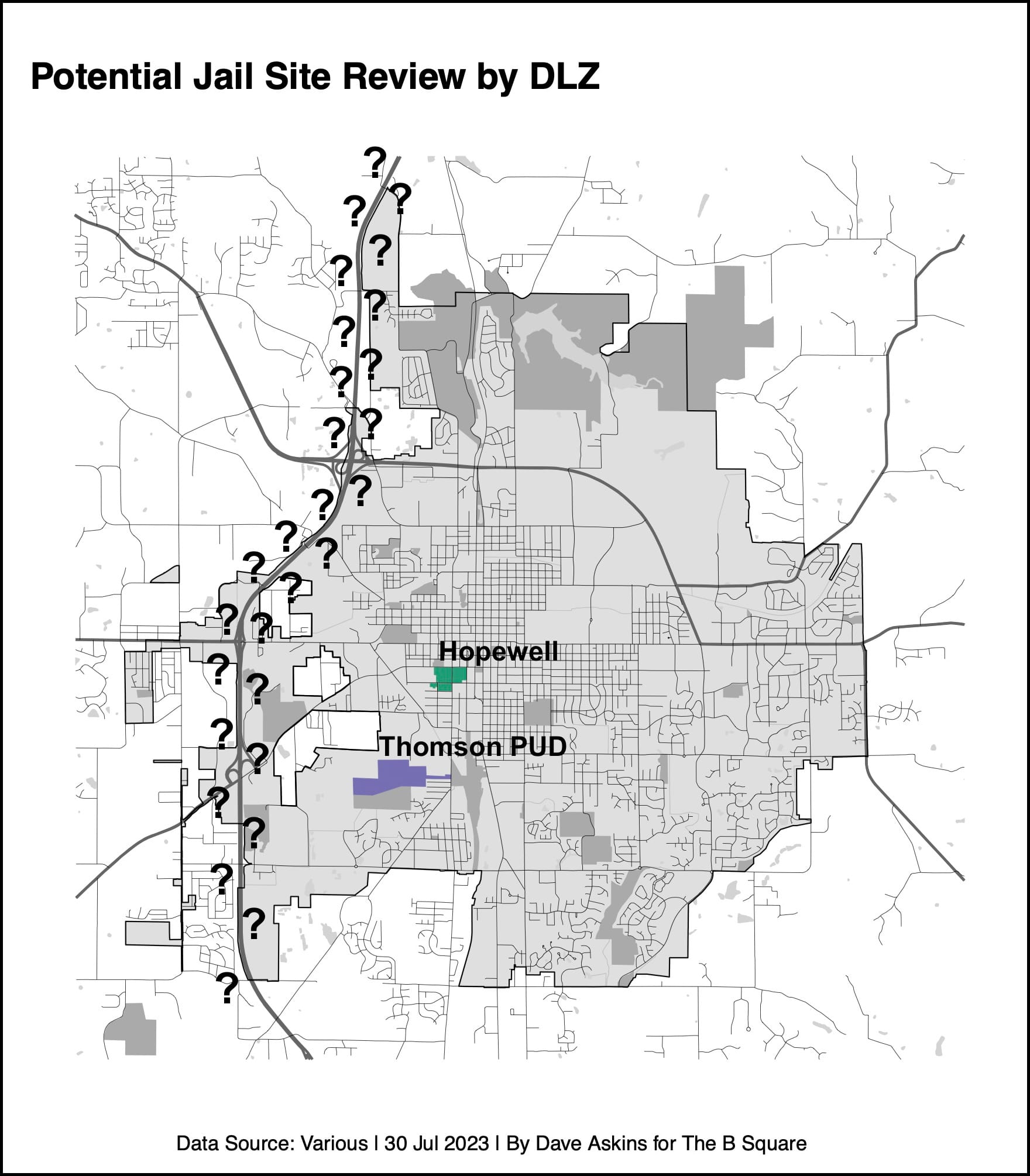Meeting on site selection for new Monroe County jail set for Aug. 29




On Tuesday, a big group of local government officials has been invited by Monroe County commissioners to a discussion about the future site of a new county jail.
The meeting, which will be convened in the Nat U. Hill Room of the county courthouse, is set to start at 5:30 p.m.
The meeting on the jail site location coincides with the second day of departmental budget hearings that are on the calendar for Bloomington’s city council.
Scheduled on Tuesday night for the city council, starting at 5:30 p.m., are Bloomington Transit, followed by the fire department, and the police department.
Bloomington police chief Mike Diekhoff, who will be presenting his department’s 2024 budget requests to the city council on Tuesday, has also been invited to the meeting about the jail site location.
Other invitees include: Ruben Marté (sheriff); Mary Ellen Diekhoff (circuit court presiding judge); Erika Oliphant (prosecutor); Jill Lees (IU police chief); Jimmie Durnil (Ellettsville town marshal); Paul Bucher (Indiana State Police district commander); John Hamilton (Bloomington mayor); Sue Sgambelluri (city council president); and the members of the Monroe County council.
In early December 2022, Bloomington’s city council rejected a requested rezone of an 87-acre piece of land in the southwest corner of the city, which means the location is no longer under consideration as a new jail site.
More than two weeks ago, on Aug. 11, Bloomington’s city council held a work session on the topic of a new jail location. The work session was attended by some county electeds, including commissioner Julie Thomas, and Jeff Cockerill, a county attorney.
The sites to be discussed this coming Tuesday are likely to be the same as those that were the subject of the Aug. 11 work session. Two of the sites are inside Bloomington.
One is the planned new Hopewell neighborhood, which is the former site of the IU Health hospital at 2nd and Rogers streets. The other potential jail site inside the city limits is the county-owned Thomson PUD property, which is east west of Rogers Street, south of Catalent.
Those two sites—along with two others that are outside city limits, but still inside the I-69 corridor—have been analyzed by DLZ, which is the county’s choice of architect for the jail facilities project. The specific sites for the other two potential jail locations have not been publicly disclosed, because they are privately owned.
At the Aug. 11 city council work session, the building footprint of the Hamilton County jail was superimposed on maps for the planned new Hopewell Neighborhood, to give an idea of how a jail facility might be situated on the two sites.
There is at least one point of consensus among county officials who are connected to the criminal justice system: The jail should be co-located with the courts, prosecutor, public defender, probation, as well as in close proximity to supporting social services.
The Thomson site could accommodate co-location, while Hopewell could not.
Another big concern about the Hopewell neighborhood is the several years of planning and public outreach that has been invested to develop a vision and master plan for redeveloping the site.
On Aug. 11, city councilmember Isabel Piedmont-Smith called Hopewell a “non-starter.” About the planning effort that had been made, Piedmont-Smith said, “I don’t think that would be fair to our community, to just throw that all away and say: No, now we have to redo it with a jail facility.”
City councilmember Sue Sgambelluri expressed almost the same view as Piedmont-Smith. Sgambelluri described the Hopewell option like this: “It’s not a nonstarter for me—but it’s sure right up next to it.”
Sgambelluri added, “It would take an enormously powerful argument to convince me to set aside all the work that’s been done to think through Hopewell as a site for housing.”
Councilmember Susan Sandberg said she’d play the devil’s advocate on Hopewell, saying, “It is incumbent on the city to cooperate [with the county government] to the best of our ability.”
That means Hopewell is not a non-starter for her, Sandberg said. Sandberg pointed to the negative economic impact on the downtown that moving the jail and other ancillary facilities from their current downtown location might have.
Piedmont-Smith floated the idea of using some of the land in the city center that has been set aside for the convention center expansion—which is a possibility because not all of that real estate is likely to be used for that project. About the idea of putting a jail close to a tourist destination, Piedmont-Smith said, “We have two hotels within a block of our current jail. People don’t even know there’s a jail there.”
It’s the county commissioners—Penny Githens, Julie Thomas, and Lee Jones—who will make the decision about the location of the new jail.
Asked last week by The B Square what the timeline might be for the commissioners to make a decision on a jail site, Thomas said, “We would like to see what we hear on Aug. 29.”
Once a jail location is settled, the details of the financing will likely start to come into clearer focus. The county council had approved $10 million for the purchase of the 87-acre parcel for which the city council denied the needed rezone. If the Thomson PUD site is selected, that’s $10 million that would not have to be spent on land acquisition.
Focused on the question on financing is the county council’s justice fiscal advisory committee (JFAC). The JFAC’s next meeting is set for Monday, Aug. 28, the day before the commissioners have scheduled their meeting on jail location.
The JFAC is supposed to adopt a funding recommendation to the full county council in about three weeks, on Sept. 18.
The construction of a new jail, at a location different from the current one at College Avenue and 7th Street, is the county government’s response to the work of two consultants, delivered two years ago. The reports from the consultants concluded that the current county jail facility, at 7th Street and College Avenue, is failing to provide constitutional levels of care.




Comments ()